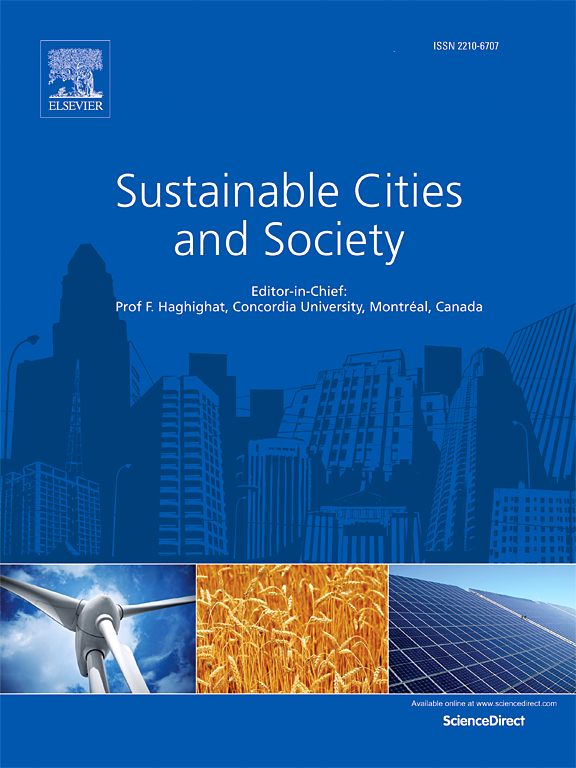AirQFormer: Improving regional air quality forecast with a hybrid deep learning model
IF 10.5
1区 工程技术
Q1 CONSTRUCTION & BUILDING TECHNOLOGY
引用次数: 0
Abstract
Accurate air quality forecasting is crucial in providing reliable early warning information to the public. However, predictions generated by three-dimensional chemical transport models, such as the widely used Community Multiscale Air Quality (CMAQ) model, often exhibit considerable biases compared to observations. Post-processing techniques can substantially enhance the forecasting skill of air quality models. In this paper, a hybrid deep learning model, namely AirQFormer, is proposed as an end-to-end bias correction method to improve the accuracy and reliability of regional CMAQ forecasts over 72 h. The performance of AirQFormer was evaluated based on ozone observations from the Greater Bay Area in Southern China for the year 2023. AirQFormer demonstrated superior accuracy at the temporal scale compared to the CMAQ model and the long short-term memory (LSTM) model over the 72-hour forecasting period. It achieved an average reduction of 35 % (5.2 ppbv) in mean absolute error (MAE) and 33 % (6.5 ppbv) in root mean square error (RMSE) compared to the CMAQ model. Additionally, it showed a 12 % reduction (1.1 ppbv) in MAE and an 11 % reduction (1.4 ppbv) in RMSE compared to the LSTM model. At the spatial scale, AirQFormer outperformed both the CMAQ model and traditional spatial bias correction methods, with MAE values being 31 % (4.5 ppbv) and 5 % (0.5 ppbv) lower than those of the CMAQ model and traditional methods, respectively. Regarding peak value forecasting, AirQFormer exhibited notable improvements compared to the CMAQ model. The false alarm rate of AirQFormer is 12 % lower than that of the CMAQ model, indicating a more accurate identification of episode events. These results demonstrate the effectiveness of our proposed model in improving air quality predictions.
求助全文
约1分钟内获得全文
求助全文
来源期刊

Sustainable Cities and Society
Social Sciences-Geography, Planning and Development
CiteScore
22.00
自引率
13.70%
发文量
810
审稿时长
27 days
期刊介绍:
Sustainable Cities and Society (SCS) is an international journal that focuses on fundamental and applied research to promote environmentally sustainable and socially resilient cities. The journal welcomes cross-cutting, multi-disciplinary research in various areas, including:
1. Smart cities and resilient environments;
2. Alternative/clean energy sources, energy distribution, distributed energy generation, and energy demand reduction/management;
3. Monitoring and improving air quality in built environment and cities (e.g., healthy built environment and air quality management);
4. Energy efficient, low/zero carbon, and green buildings/communities;
5. Climate change mitigation and adaptation in urban environments;
6. Green infrastructure and BMPs;
7. Environmental Footprint accounting and management;
8. Urban agriculture and forestry;
9. ICT, smart grid and intelligent infrastructure;
10. Urban design/planning, regulations, legislation, certification, economics, and policy;
11. Social aspects, impacts and resiliency of cities;
12. Behavior monitoring, analysis and change within urban communities;
13. Health monitoring and improvement;
14. Nexus issues related to sustainable cities and societies;
15. Smart city governance;
16. Decision Support Systems for trade-off and uncertainty analysis for improved management of cities and society;
17. Big data, machine learning, and artificial intelligence applications and case studies;
18. Critical infrastructure protection, including security, privacy, forensics, and reliability issues of cyber-physical systems.
19. Water footprint reduction and urban water distribution, harvesting, treatment, reuse and management;
20. Waste reduction and recycling;
21. Wastewater collection, treatment and recycling;
22. Smart, clean and healthy transportation systems and infrastructure;
 求助内容:
求助内容: 应助结果提醒方式:
应助结果提醒方式:


